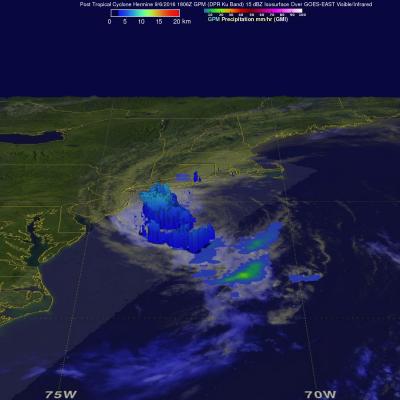PPS Down for Extended Maintenance, Sunday September 18, 2016
The PPS (Precipitation Processing System) will be down Sunday September 18, 2016 -estimated time from 10:00am to 6:00pm EDT (14:00 - 22:00 UTC) for Special Unscheduled Maintenance. Please note: although it is unlikely, due to unforeseen events PPS systems might be down overnight and only be available starting Monday morning, September 19, 2016. During this time, all data transfers between PPS source and its consumer systems (GDAAC/DISC) as well as Science User services (FTP and STORM access) will be unavailable. You may e-mail “sysgods@mail.pps.eosdis.nasa.gov” if there are any urgent matters


